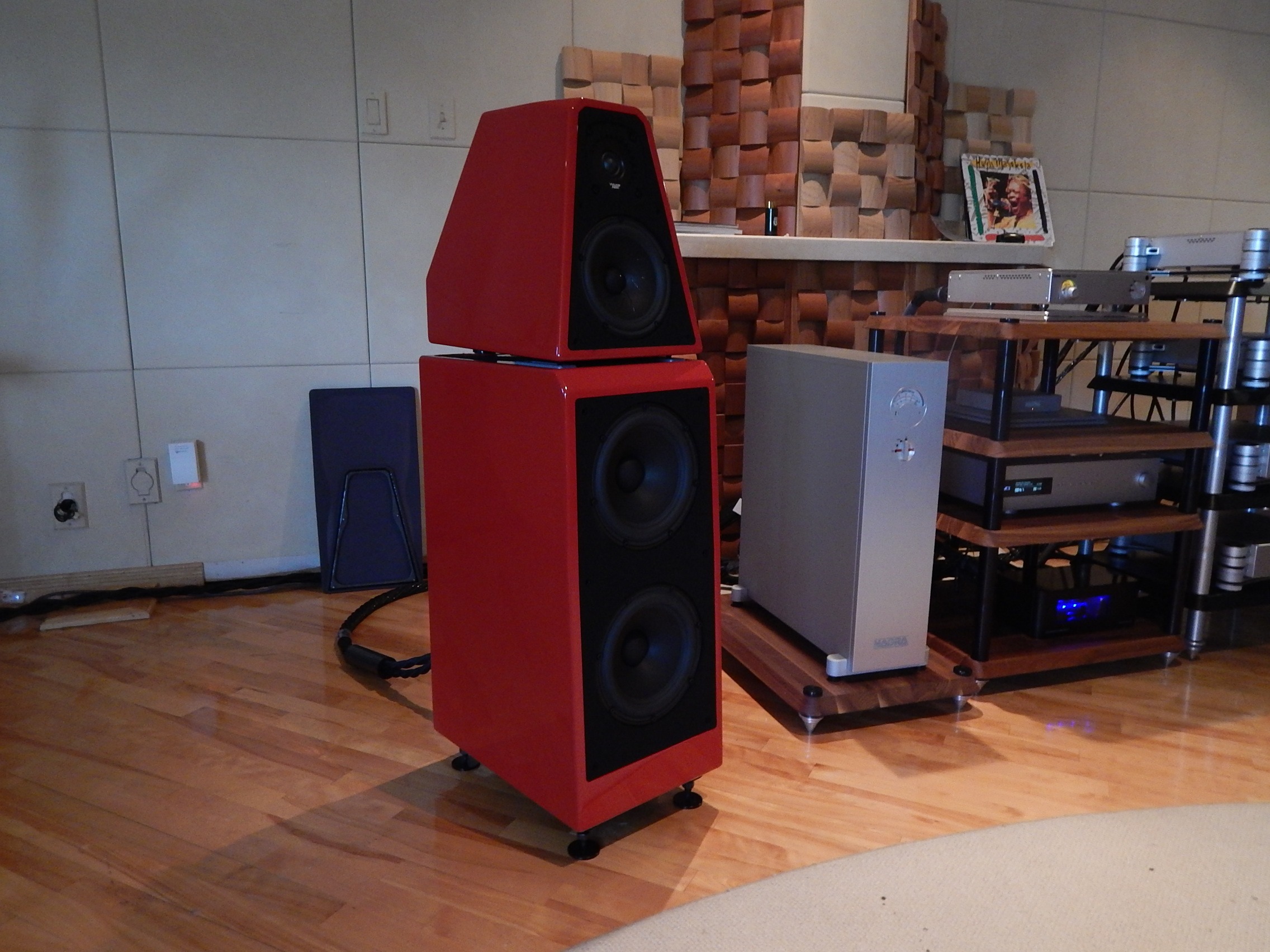
Photos by Robert Schryer except where otherwise indicated.
I’d never listened to the WATT/Puppy speaker before, but, of course, as an audiophile, I’d heard of it, although not in the last few years, the reason for which will be revealed in a moment. But I always wanted to hear it, so having been offered the chance to audition this iconic model’s 50th Anniversary edition—so-designated to commemorate the company’s founding in 1974—at Montreal’s landmark Filtronique audio store as part of the speaker’s global launch, I jumped at it.
At $48,000 a pair (US$ 38,000/pair), the WATT/Puppy doesn’t quite suit my pocketbook, so to speak, but it does, apparently, suit those of many other people; Wilson’s Bill Peugh, who was at the launch, told me the company had barely started taking orders for the WATT/Puppy and already it’s proven a best-seller, with consumers prepared to wait 3 months to receive a speaker they haven’t even heard. It speaks of people’s trust in the Wilson Audio company, co-founded by the late David Wilson and his wife Sheryl Lee, and of the WATT/Puppy legacy, which spanned from 1995 to 2011, through models 1 to 8*. Gone now is the numerical sequencing—the new WATT/Puppy, a design brought to fruition by David’s son, Daryl, an apple that, by all accounts, fell very close to the tree, is named, simply, the WATT/Puppy. The speaker’s cabinet will sport a 50th Anniversary medallion until the end of the year, after which the model will continue to be sold without the medallion but otherwise be unchanged.
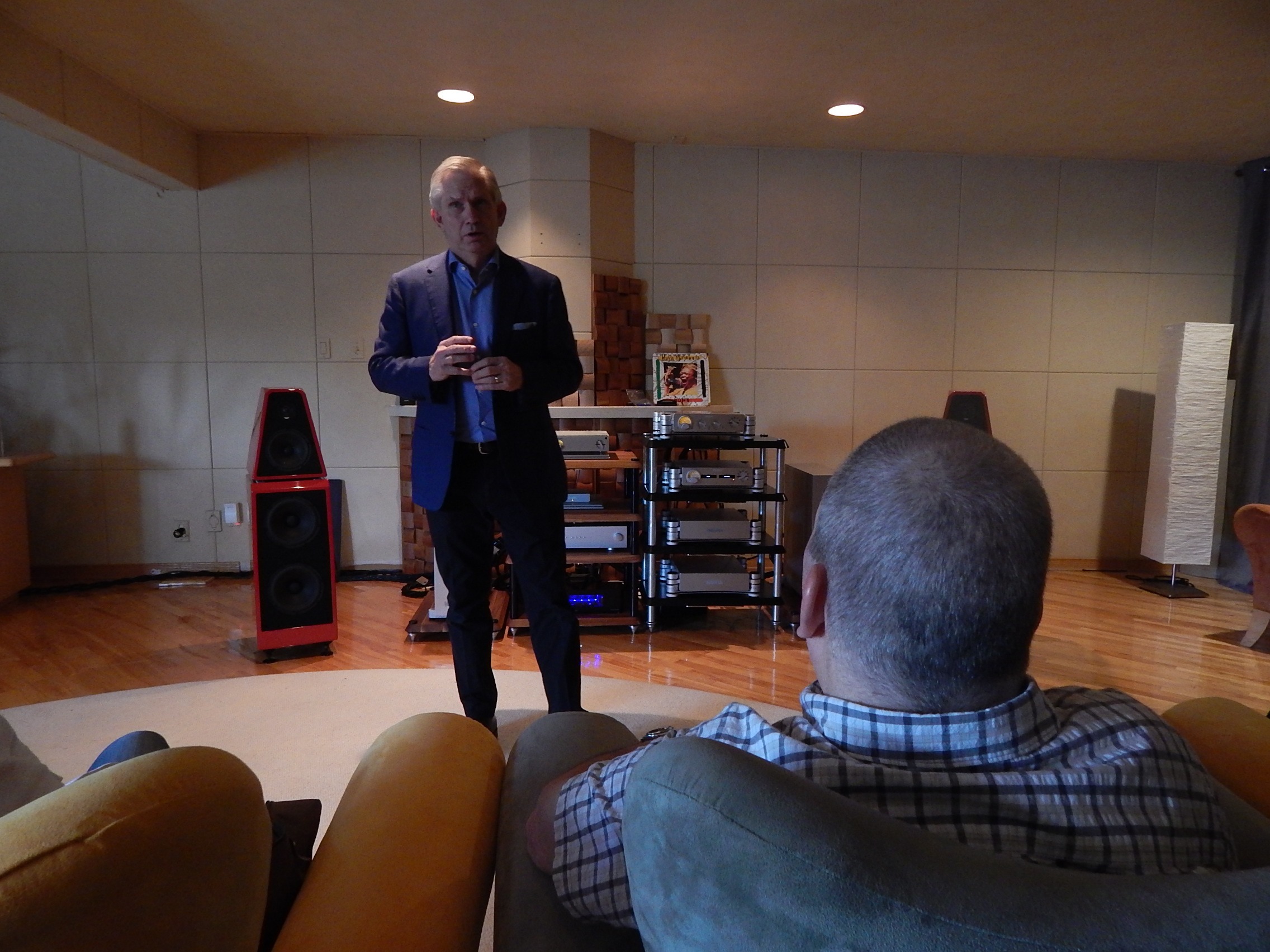
Looking spiffy in a creaseless blue suit, Bill delivered a fascinating summary of the company’s past and philosophical underpinnings—about how its speakers were often named after the family dogs, how Sheryl Lee turned her husband’s creations into a business, and how the company never believed in trickle-down technology. “We try to make every model the best it can be,” said Bill. “As soon as we discover how to make something better for a model, every following model, regardless of where it stands in our line-up, will receive the same improvement.” Cost is also not a factor in determining if an improvement will be implemented. “We don’t think in terms of ‘hey, this speaker has to meet this price point’,” Bill said. “If a cone material that costs more to make sounds better, it will be used.”
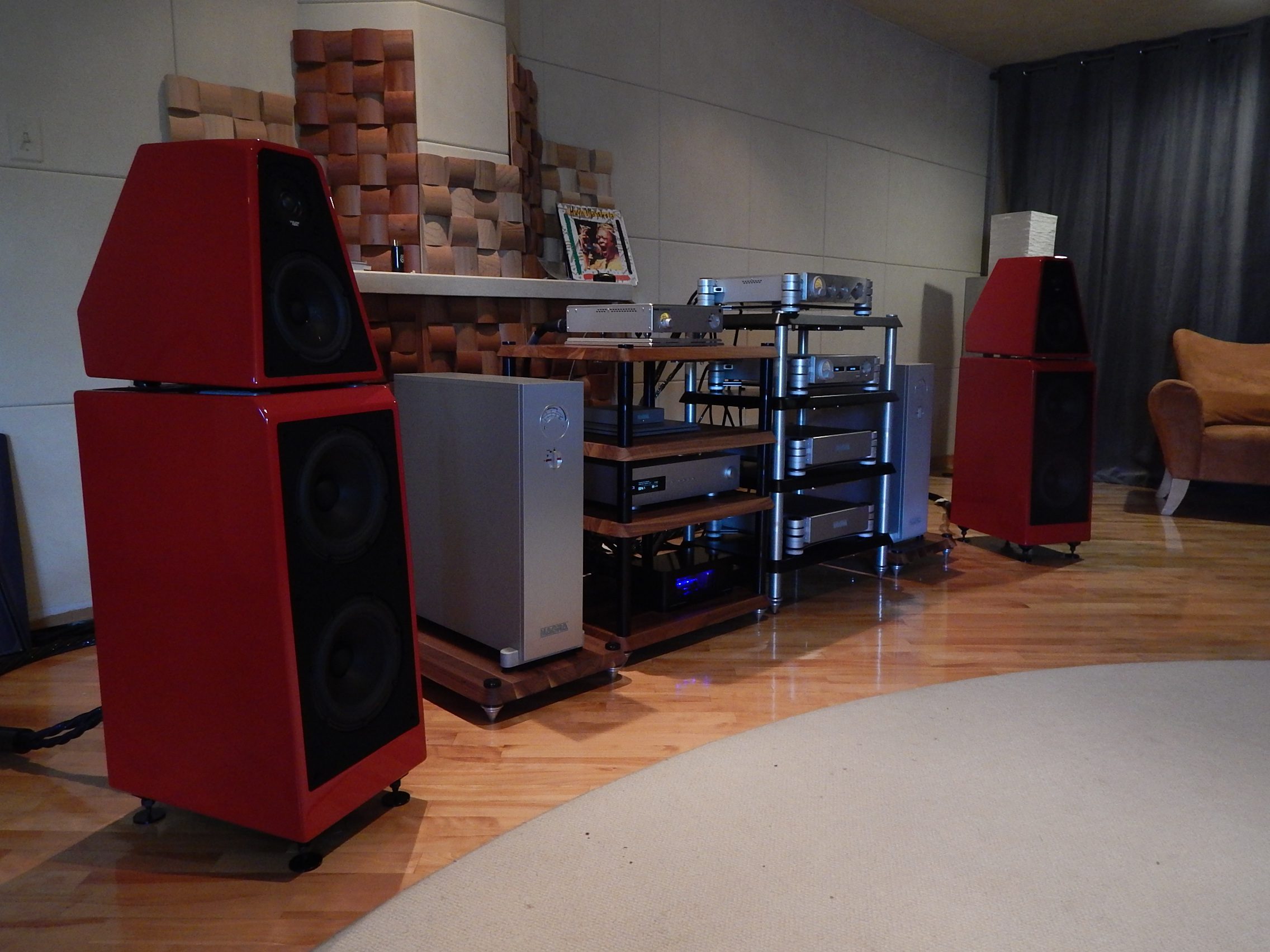
The WATT/Puppy speakers being demoed at Filtronique came in the model’s beautiful Pur Sang Rouge “Upgrade” finish—finishes come in three ranges: “Standard”, “Upgrade”, and “Premium Pearl”. Upstream components included a digital front-end by DCS and electronics by Nagra, with cabling by Synergistic Research.
Bill treated the listening gallery to a variety of music that included a male choir singing a cappella, the Rolling Stones, Melody Gardot, Nirvana, Stravinsky, and Bill Evans. What struck me most about the cross-section of recordings played was how, as revealed through WATT/Puppy, each sounded different but still compellingly musical. Transparency was off the charts, revealing a soundstage that was intricately layered and dimensional. Images were bold, starkly defined, and protuberant. I heard deep, well-controlled bass and a rich tonal palette. By the end of the presentation, I was, in a word, smitten.
After his presentation, Bill was kind enough to afford me time to interview him. He and I sat on a sofa together in a closed-off storage room. Despite his whirlwind schedule, Bill sounded thoughtful and unrushed throughout our interview.
I began by asking if any other Wilson model would receive the 50th Anniversary designation.
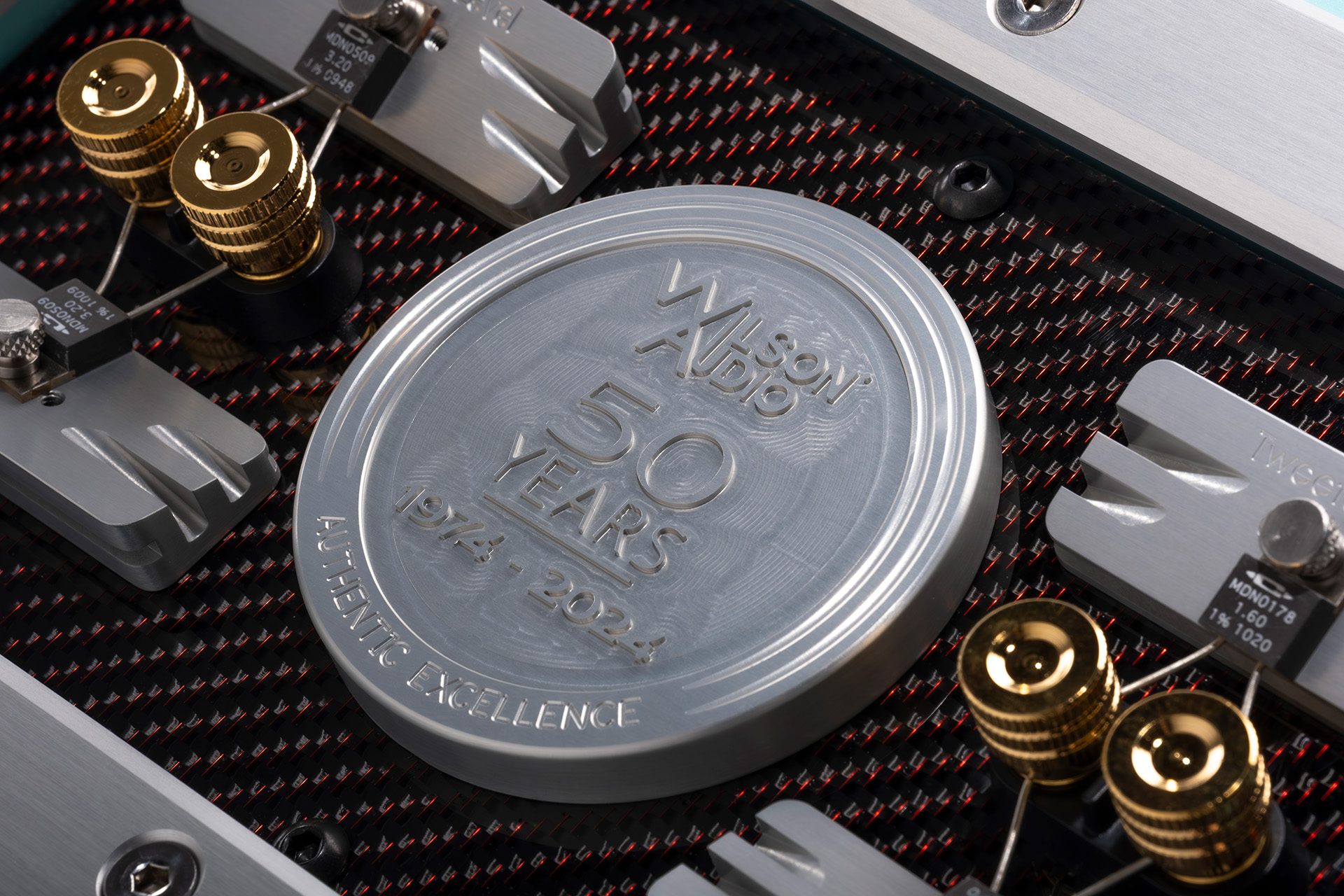
Bill: “The Watt/Puppy has a designation of 50 years because it was introduced in the company’s 50th year. There won’t be, as far as I know, another product coming out this year.”
Did he consider product reviews still important to a product’s sales?
“It depends on where a company is in its life, and how well it’s done to build its brand, its customer base, its dealer-and-distribution base, ” he said. “If you’re a young company, exhibiting at audio shows and getting reviews can be critical. For the more established companies, it’s certainly important to get reviews, but they won’t make or break you.
“Look at what we did with the WATT/Puppy [for the global launch],” he continued. “Putting it in 75 locations, not giving it to a reviewer [but rather] to the people who are our partners in this. For the most part, that’s what we do at Wilson Audio—events with our dealers that are targeted to people who have an interest in our products. What we found is that when dealers do these more targeted things, they get to spend time with people, valuable time.”
What was the final design that Dave worked on and the first design that Daryl did?
“The final for Dave would be the WAMM. That’s why we don’t touch it. There’s not going to be another version of the WAMM. That’s Dave’s Magnus Opus. In fact, we had some people who wanted us to [continue its evolution] because it’s our best speaker and they were very upset when we said no.”
“You retired the model?” I asked.
“It’s still available. People can still buy it. But at its price, it doesn’t sell as often as a WATT/Puppy obviously”, he said. “As far as Daryl’s first full-range stereo speaker design that was all his, that would be the Alexx, in 2016.”
Was Daryl the head of the team that designed the new Watt/Puppy?
“Of course. He’s the head of design for everything.”
Since the WATT/Puppy 8 was launched over a decade ago, did the new WATT/Puppy represent some sort of departure for the model?
“No. The WATT/Puppy 8 morphed into the Sasha WATT/Puppy. The thing is, as we were going up the line, the Sasha WATT/Puppy became Sasha 2, became Sasha DAW, became Sasha V. [The speaker] got bigger. One of the WATT/Puppy’s claims to fame was its size. If you look at the new WATT/Puppy, it’s narrower than Sasha V, along with being about 5” shallower and about 4” shorter. So it’s substantially smaller. There are people who will put it visually where they won’t put a Sasha V.”
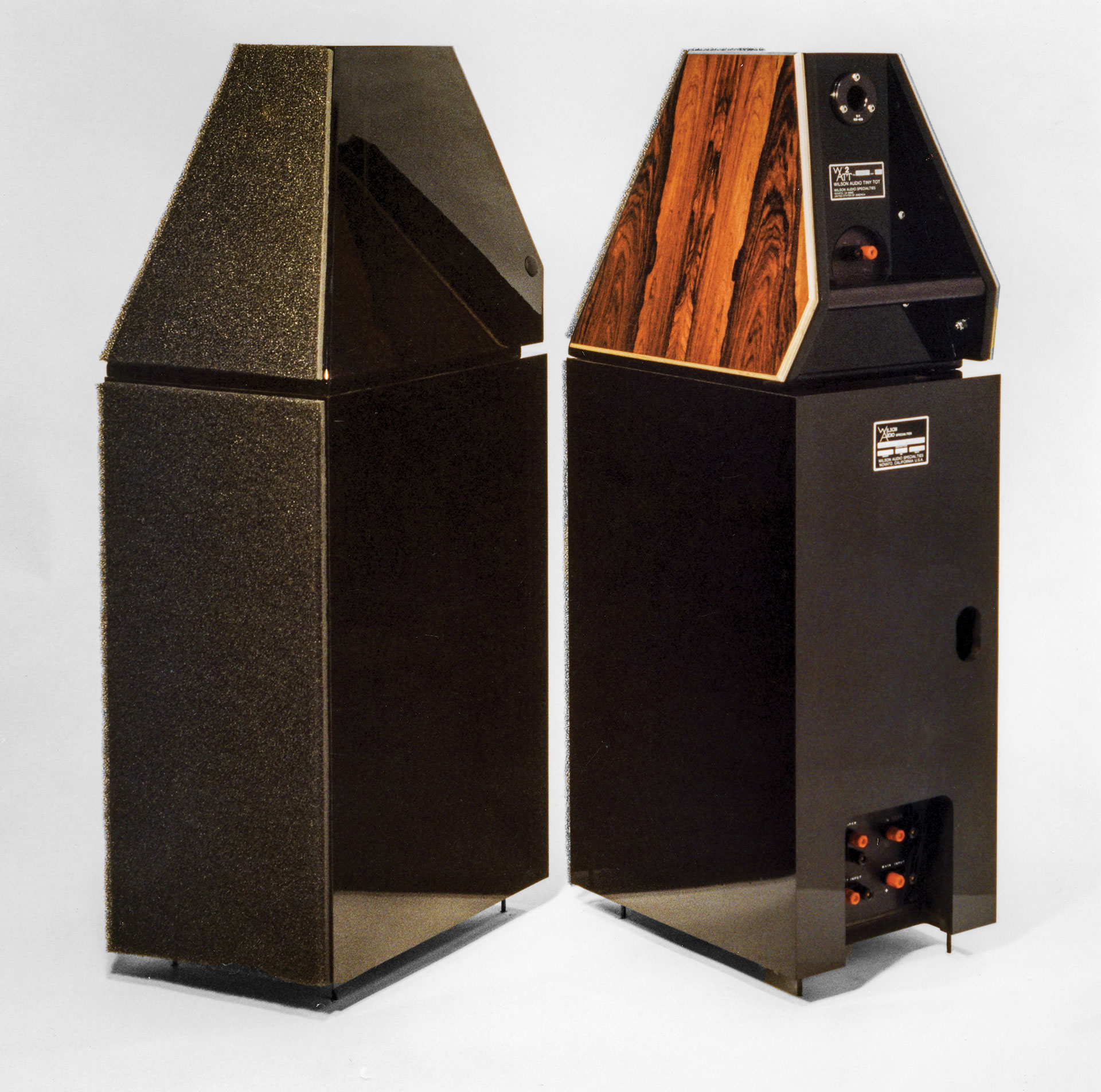
“So this WATT/Puppy would never be called the 9?” I asked.
“Not by us. It’s the Watt Puppy.”
Was there one particular improvement made to the WATT/Puppy that brought about the biggest change in sound quality over previous models?
“We build on what we know,” said Bill. “We don’t run out and do things differently. We have a platform that is basically generally defined. What we did with the WATT/Puppy is we took the concepts that made WATT/Puppy and applied what we know today to making the best WATT/Puppy so far.”
“So, tweaking things here and there—?” I asked.
“No,” he said. “We don’t tweak anything. Tweaking is—and this is a personal thing—’tweaking’ is the worst word in audio. It indicates that I don’t know what I’m doing and I’m going to throw crap at the wall and hope something sticks.”
He added: “Daryl has, at this point, 45 years of documentation—thick notebooks of everything Dave had ever learned or done building speakers. We document everything to the nth degree. When you have that level of documentation, you do things that make sense to do going forward, and you get either the expected result or not, but there’s no throwing things at the wall.”
“So it’s a continuation of what’s already been established,” I said.
“Exactly. That’s why we don’t do trickle down,” he said. “We do trickle forward. Everything we know is available to [improve] that product. Take the WATT/Puppy from a decade and a half ago. We know a lot more now than we knew then. A lot of that’s now available, as you can see in the drivers, the capacitors, the materials.”
The WATT/Puppy has also gotten more attractive, I told him.
“That’s Daryl,” he said. “(founder) Dave was very much form follows function. Daryl’s got some artist in him. We begged him not to put too many curves in it, or else nobody would remember it’s a WATT/Puppy.”
In North America, Wilson Audio has 36 US dealers and four Canadian ones. Was the company looking to establish more dealers in Canada?
“We look for dealers, not markets,” he replied. “We have an unusually high expectation of what a dealer has to do. We’re not very nice about, shall we say, dealers who wouldn’t follow that practice. We’re very customer-centric. If someone calls in with a problem, and we give the dealer a call, we expect that dealer to take no longer than 24 hours to get in touch with that customer—and preferably that day.
“The dealer has to install every speaker using the WASP (Wilson Audio Setup Procedure) speaker placement process.”
“So the WASP process is still being used?” I asked.
“There’s nothing better,” he said. “Why wouldn’t we?”
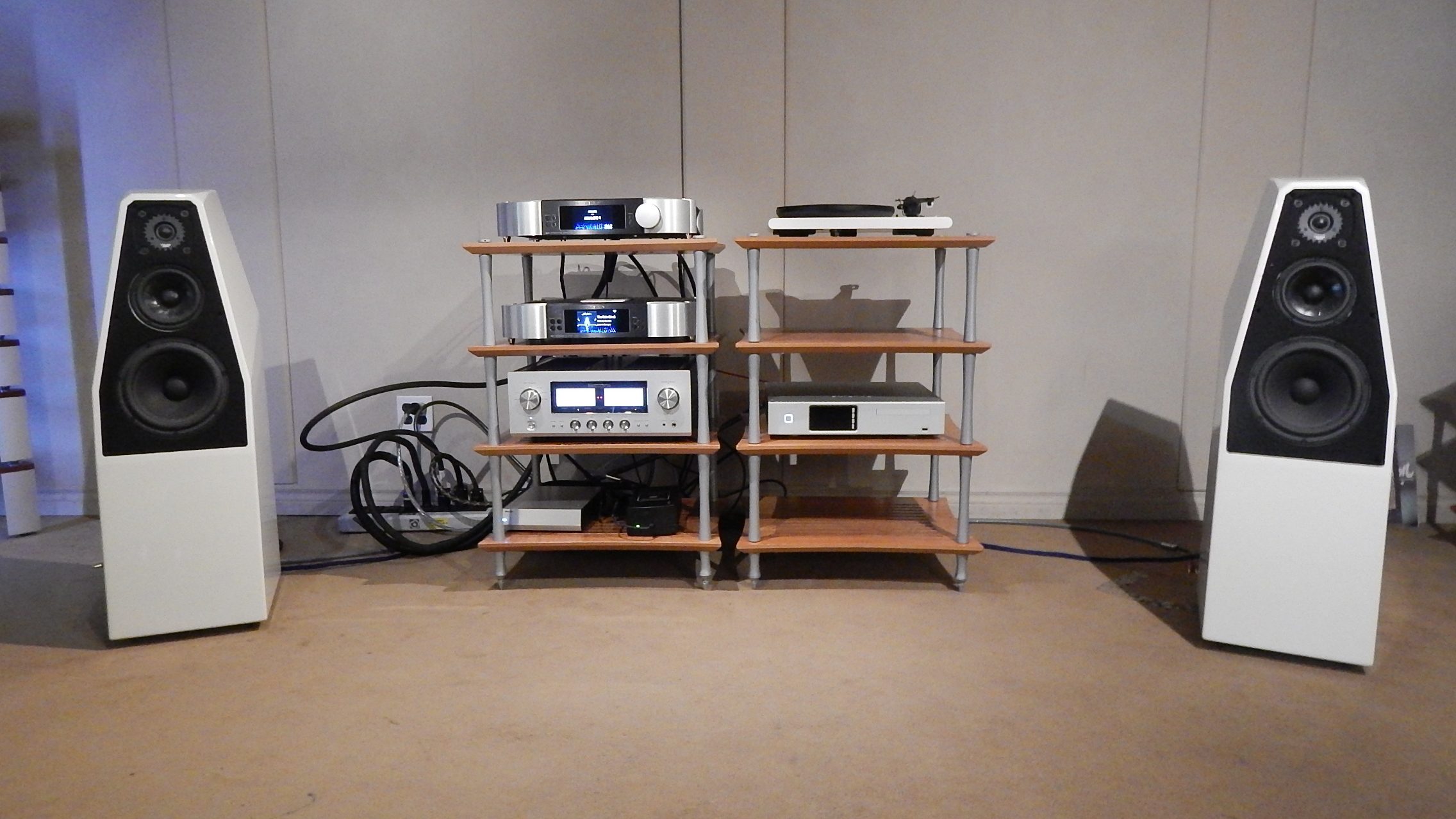
Wilson’s biggest-selling speaker?
“The SabrinaX,” Bill said. “Actually, today it would be the WATT/Puppy. Any time you launch a speaker, particularly at a lower price range, it does that. The WATT/Puppy probably will be our best-seller for the next two years, just because of where it is on the curve, and where the SabrinaX is. Each product has a curve that it follows, and the WATT/Puppy is in its launch phase.”
Did he have a favourite Wilson Audio design?
“It depends. There are things the WAMM does that nothing else can do. There are things (Chronosonic) XVX does that the WAMM can’t quite do. We don’t talk much about that, but there are [differences], and part of that has to do with the midrange driver.
He continued: “In the real world, I love the idea of a smaller loudspeaker, so for me, the WATT/Puppy, though it’s not as resolved as an Alexia, [and the fact] it can visually go into a smaller room where a Sasha couldn’t, that’s probably going to be a speaker I own.”
With a grin and a twinkle in his eye, he added: “But I also own the Sasha V.”
*Technically, there was no model 4; the number 4 is considered unlucky in Asia.
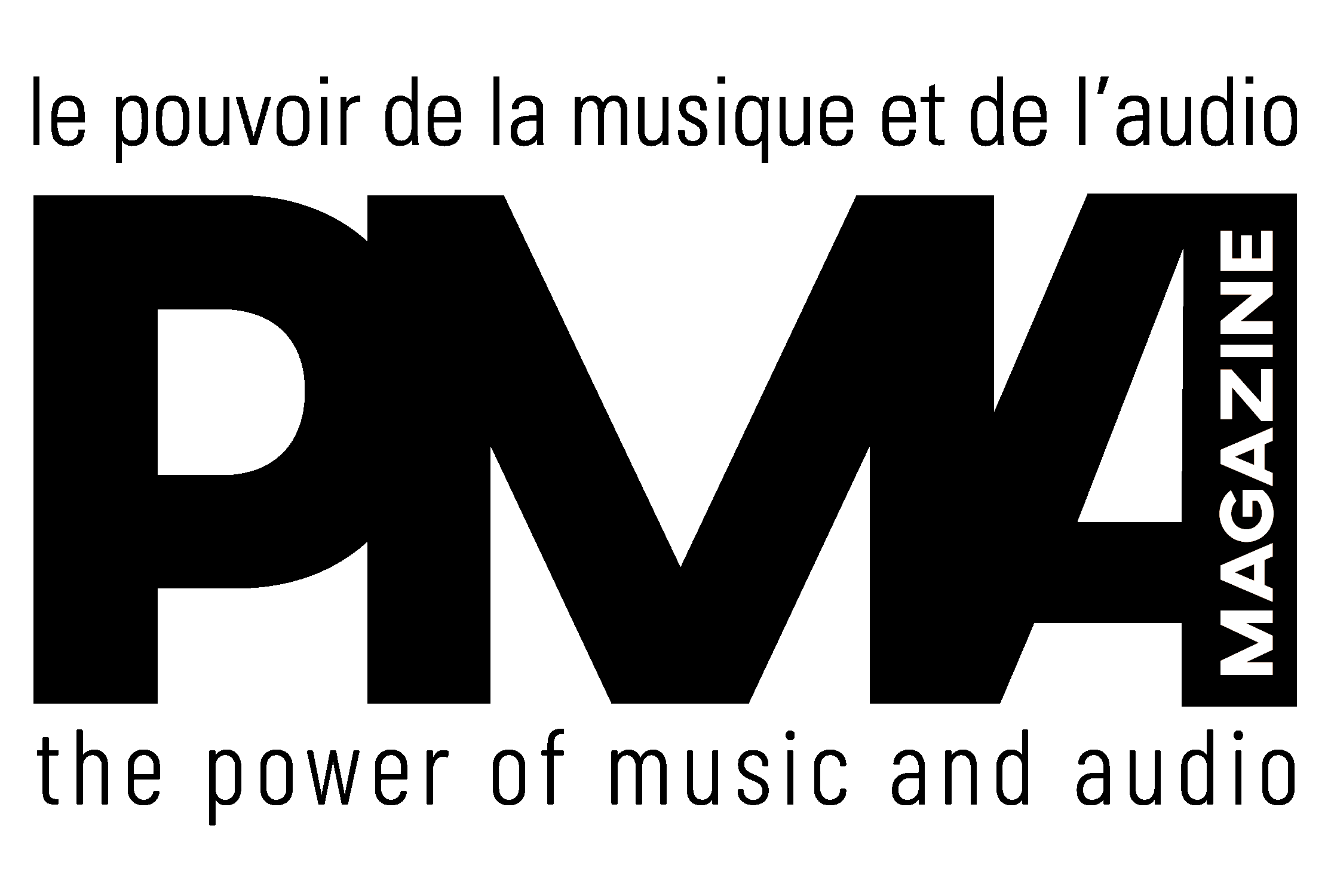


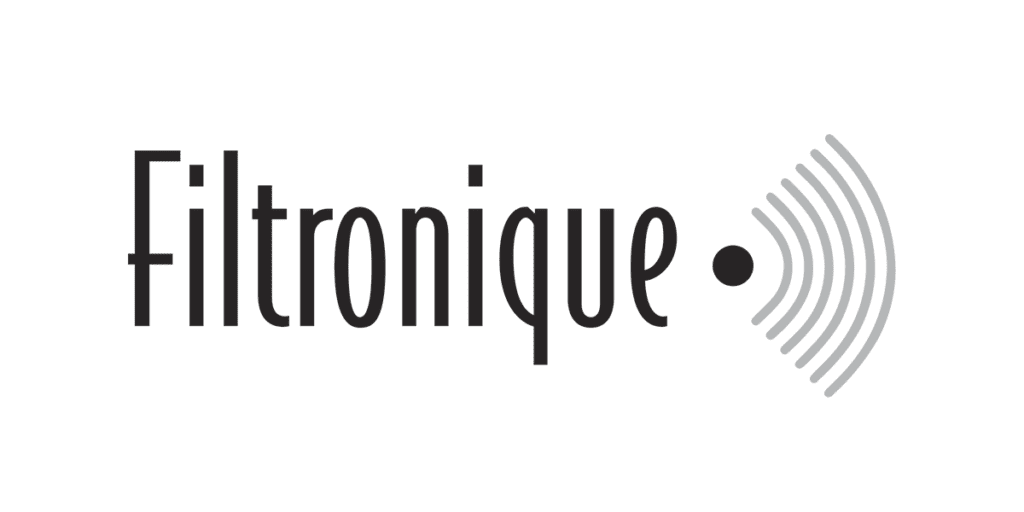



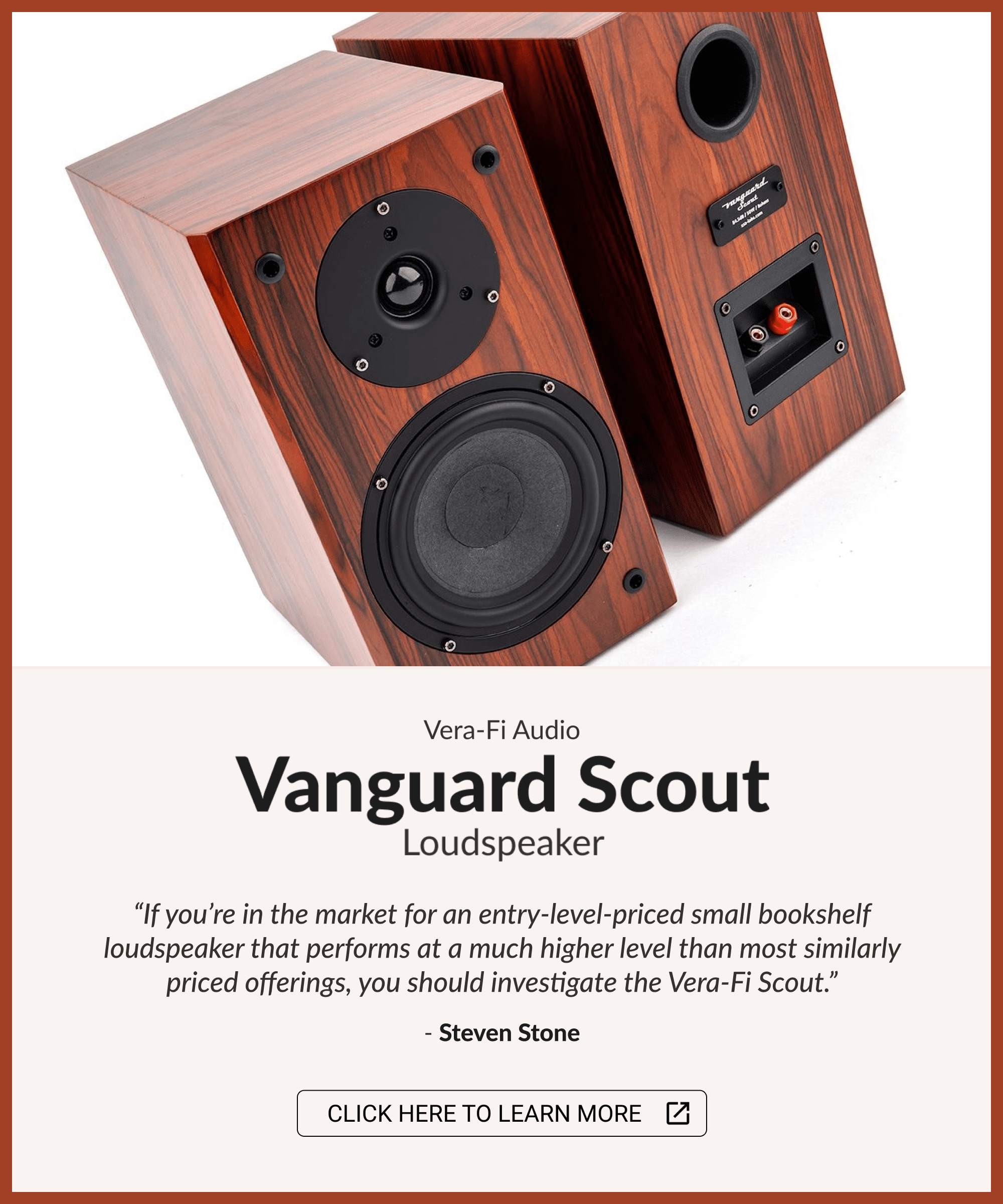









Leave a Reply